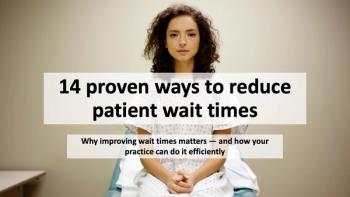Join us Sept. 19 & 20 in Philadelphia at Practice Rx, our new conference for physicians and office administrators to help improve your medical practice and your bottom line.
Why Pay for Performance is Not a Good Motivator for Physicians, PAs
Quality of patient care is paramount, and I hope that the powers that be really think about realistic solutions to improving it.
The New York Times published a provocative
Pay for performance affects a lot of providers and healthcare systems, and this concept is accelerating with the implementation of the Affordable Care Act, with the establishment of entities such as accountable care organizations (ACOs) and other systems to link pay to measures of health.
You would think that pay for performance would work on the hospital level, where there is a lot of bureaucratic control of medical and nursing practice. But The New York Times cited a
The study, reported in The New England Journal of Medicine, found that there was “…no evidence that the largest hospital-based pay-for-performance program led to a decrease in 30-day mortality.”
The New York Times article went on to identify many problems with pay for performance. They include:
• Lack of knowledge regarding how to define “quality.” We shoot for the easily quantifiable metrics, and avoid the difficult to measure (and some would say more important measures), such as quality of life and ability to function and perform activities of daily living.
• Some of the metrics are affected by things that are totally out of the control of providers and hospitals (i.e. socioeconomic factors). As a result, the hospitals and providers in poor and medically underserved areas are even more financially challenged in delivery of needed care.
• Last, and probably most important to take into account, is that the financial “carrot and stick” method can backfire. I, for instance, got into my profession because I had a burning desire to make a difference in the health of my community. I do like that I make a good income, and am able to support my family, but it is a secondary motivator. There is a fear that the pay for performance system could upset the balance between extrinsic motivators (such as money) and intrinsic motivators (such as providing patients with a better quality of life) and end up doing more harm than good.
In addition to higher payment for attaining certain quality measures, some pay for performance systems include payment penalties for failing in certain areas.
For instance, a hospital may experience denial of payment when certain things happen, such as if a patient experiences hospital acquired pressure ulcers (HAPU).
The idea is that a “disincentive” will prod hospitals to educate their medical and nursing staffs, put systems in place to ensure that core measures are met, and ensure that “never events” never occur.
This makes sense to me, and these things have certainly altered the way in which I care for patients in the hospital.
Still, a recent
The study published in the New England Journal of Medicine found “…no evidence that the 2008 CMS policy to reduce payments for central catheter–associated bloodstream infections and catheter-associated urinary tract infections had any measurable effect on infection rates in U.S. hospitals.”
I hope that the heightened awareness of catheter-associated infections has changed and improved practices in my surgical ICU, and all hospital units. We do daily “plastic rounds” and weekly interdisciplinary rounds in our unit to discuss these things and to try to protect the patient from the risks of these interventions as much as possible.
Quality of care is paramount, and I hope that the powers that be really think about realistic solutions to improving it. It is important to focus on the things that really make a difference on our patients' lives.
One example: The Journal of Thoracic and Cardiovascular Surgery recently published a study that showed the 30-day readmission rate dropped 25 percent when patients received home care visits from PAs.
I want to believe that I, and others practicing medicine, are doing so based on best practices and evidence-based medicine.
I also hope that we practice because of the intrinsic motivators, and not because of financial reward or fear of penalty. That is the hallmark of a true professional, and a distinguished mark of quality physicians, PAs, and all those who dedicate their lives to practicing medicine.
This blog was provided in partnership with the American Academy of Physician Assistants.
Newsletter
Optimize your practice with the Physicians Practice newsletter, offering management pearls, leadership tips, and business strategies tailored for practice administrators and physicians of any specialty.









